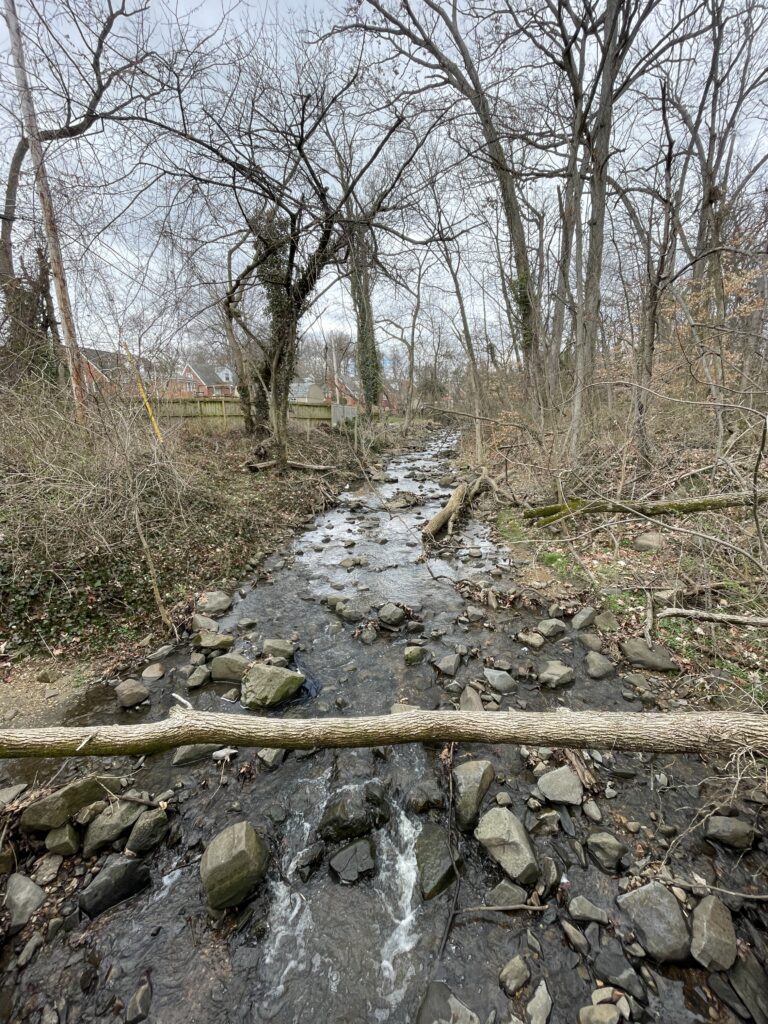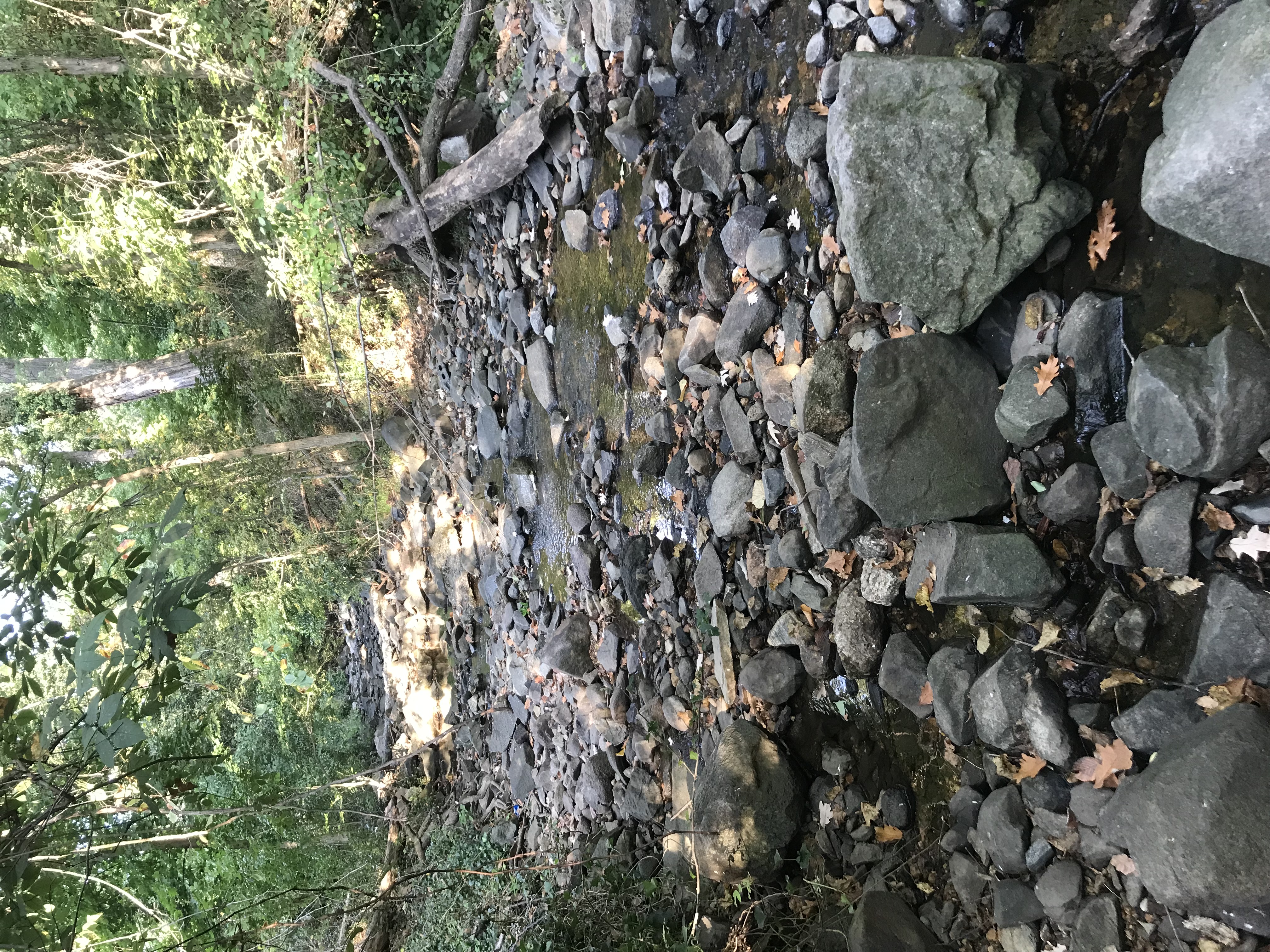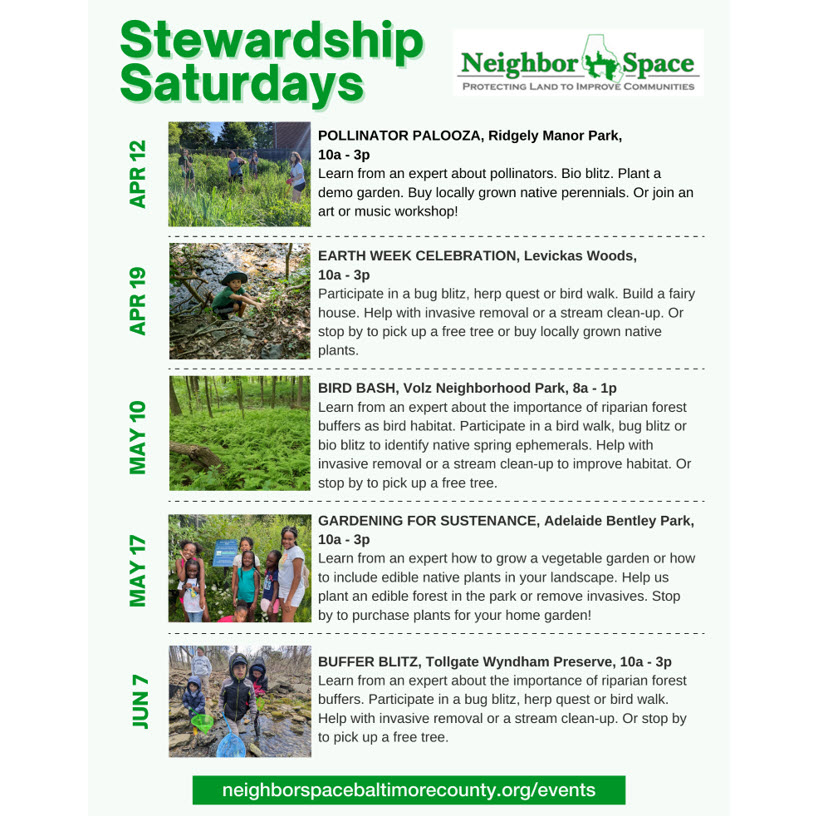NeighborSpace is excited to launch a Stream Monitoring Protocol to assess streams in our forest buffer sites. NeighborSpace conserves five sites, totaling 45 acres, that serve as stream buffers: Levickas Woods and Sawmill Branch in Catonsville, Tollgate Wyndham Preserve in Owings Mills, Volz Neighborhood Park in Middle River, and Norman Creek Park in Essex. This initiative, funded by a Five Star and Urban Waters Restoration Program grant from the National Fish and Wildlife Foundation (NFWF), is modeled on the Maryland Department of Natural Resources (DNR) stream monitoring program and will help NeighborSpace track long-term changes in water quality and habitat conditions.
What is a Stream Buffer?
A stream buffer is a vegetated area along a stream that helps maintain water quality, stabilize banks, and support biodiversity.

Why Stream Buffers Matter
Healthy stream buffers provide a number of ecosystem services and benefits to water quality and human health. Vegetation along the stream absorbs and filters pollutants, such as excess nitrogen, phosphorus, and sediment, from stormwater before they reach the stream. Plants also help reduce erosion; plants with deep root systems stabilize the soil and prevent sedimentation. Buffers also regulate water temperature. The vegetation provides shade, keeping water cooler and maintaining oxygen levels needed for fish and aquatic life. Additionally, natural leaf litter, woody debris, and roots create shelter and habitat for fish and insects.
Our team recently completed the first stream assessment at Tollgate Wyndham Preserve. We plan to conduct assessments annually to monitor changes over time. The stream running through Tollgate is an unnamed branch of the Upper Gwynns Falls. Overall, the stream health received a score of “fair” due to erosion in some areas, as well as concerns about sedimentation and nutrient pollution from stormwater runoff. The stream scored well in healthy vegetated buffer areas, aquatic habitats, and presence of macroinvertebrates. These findings suggest that the stream is providing habitat, cooling the water, and providing ecosystem benefits. The assessment also highlights the need for stronger riparian buffers and stormwater management solutions to reduce erosion and run-off to improve long-term water quality.

Restoration Methods: Science-Backed Solutions
NeighborSpace is using the results from stream assessments at our riparian buffer sites to inform our ongoing restoration efforts. Our restoration efforts focus on stabilizing streambanks, filtering pollutants, and enhancing habitat. One area of focus is strengthening riparian buffers by planting native trees and perennials such as red maple, sycamore, river birch, spicebush, and elderberry to anchor soil and absorb excess pollutants. These plants also provide habitat for wildlife.
One method to increase vegetation is live staking, a planting method which involves inserting plant stems and branch cuttings directly into the soil along streambanks. You can live stake with specific species, such as silky dogwood, black willow, and buttonbush, along streambanks. These plants take root quickly, stabilizing soil and preventing erosion.
We will also be considering upstream stormwater management solutions like rain gardens and bioswales to slow and filter runoff, capturing pollutants before they enter the stream. Additionally, post-assessment restoration efforts may include improving in-stream habitat by retaining natural leaf litter and fallen branches that support macroinvertebrate populations. These conditions create pools and slow water flow to improve conditions for fish and aquatic insects.


How You Can Get Involved
After conducting our initial set of stream assessments this year, NeighborSpace will be seeking volunteers to assist with future stream monitoring, macroinvertebrate surveys, and restoration plantings. You can also join us at this spring’s Stewardship Saturdays at the following forest buffer sites to learn more about stream buffers, wildlife, and participate in stream restoration plantings.
Saturday, April 19th – Earth Week Celebration – Levickas Woods at Dunmore in Catonsville
Saturday, May 10th – Bird Bash – Volz Neighborhood Park in Middle River
Saturday, June 7th – Buffer Day – Tollgate Wyndham Preserve in Owings Mills
